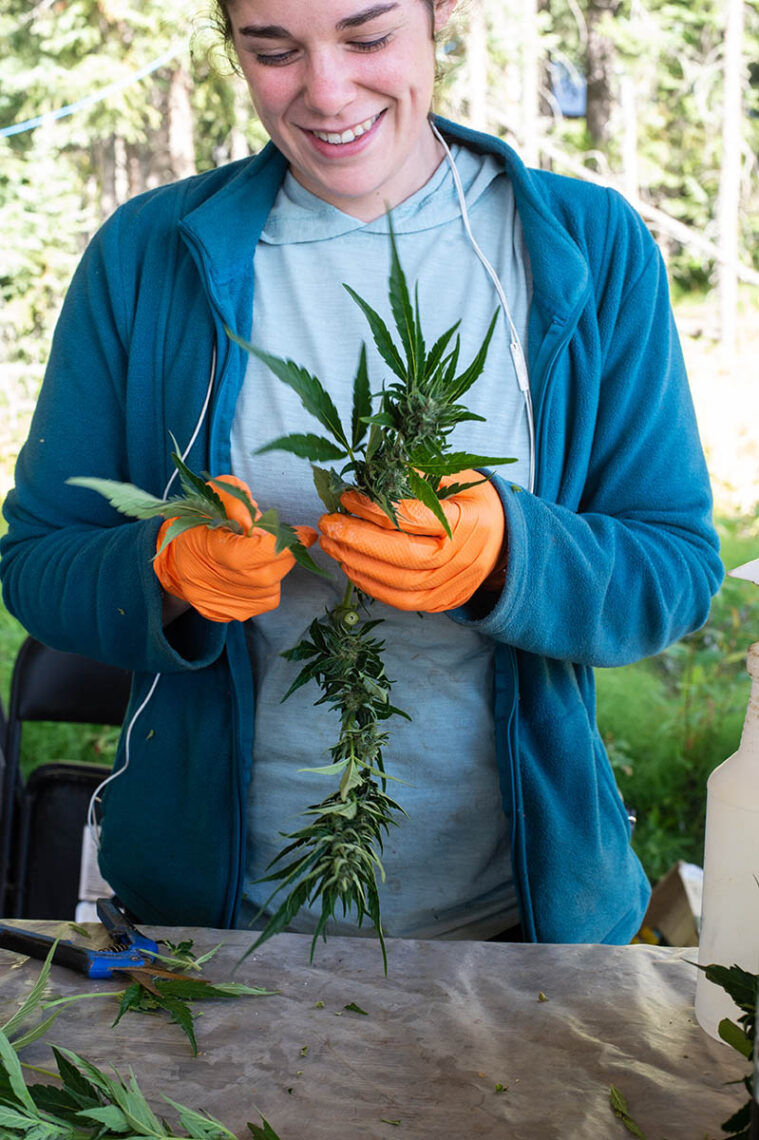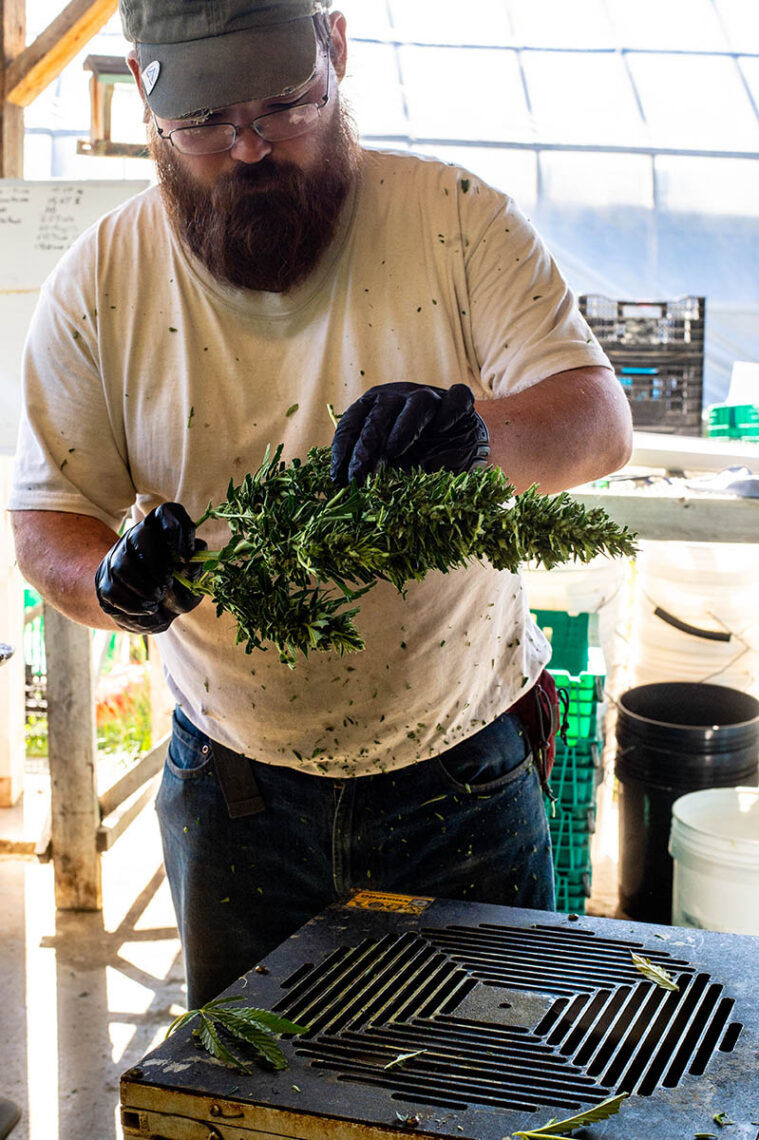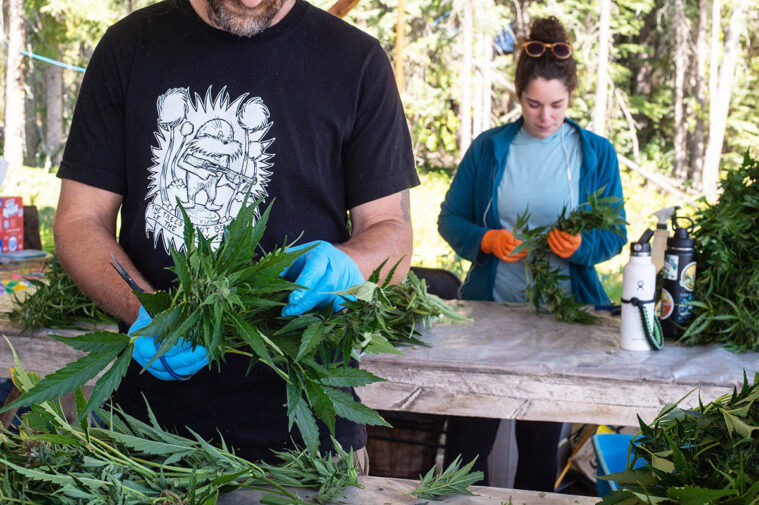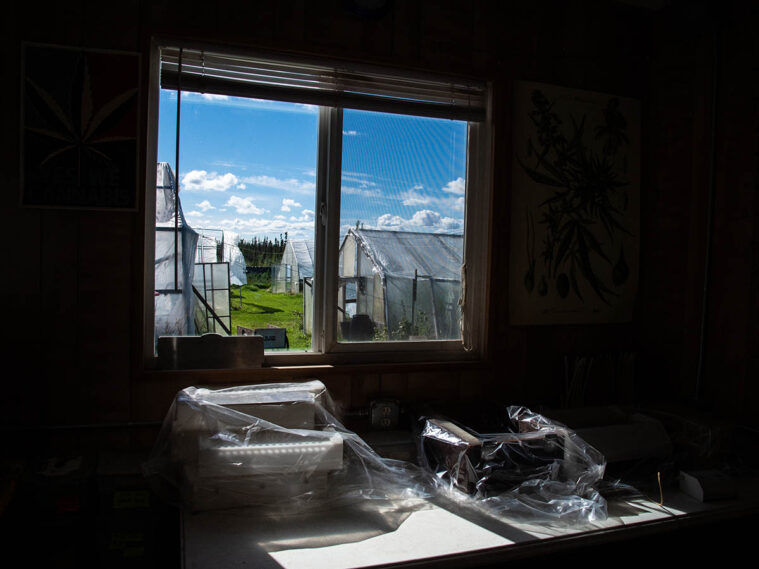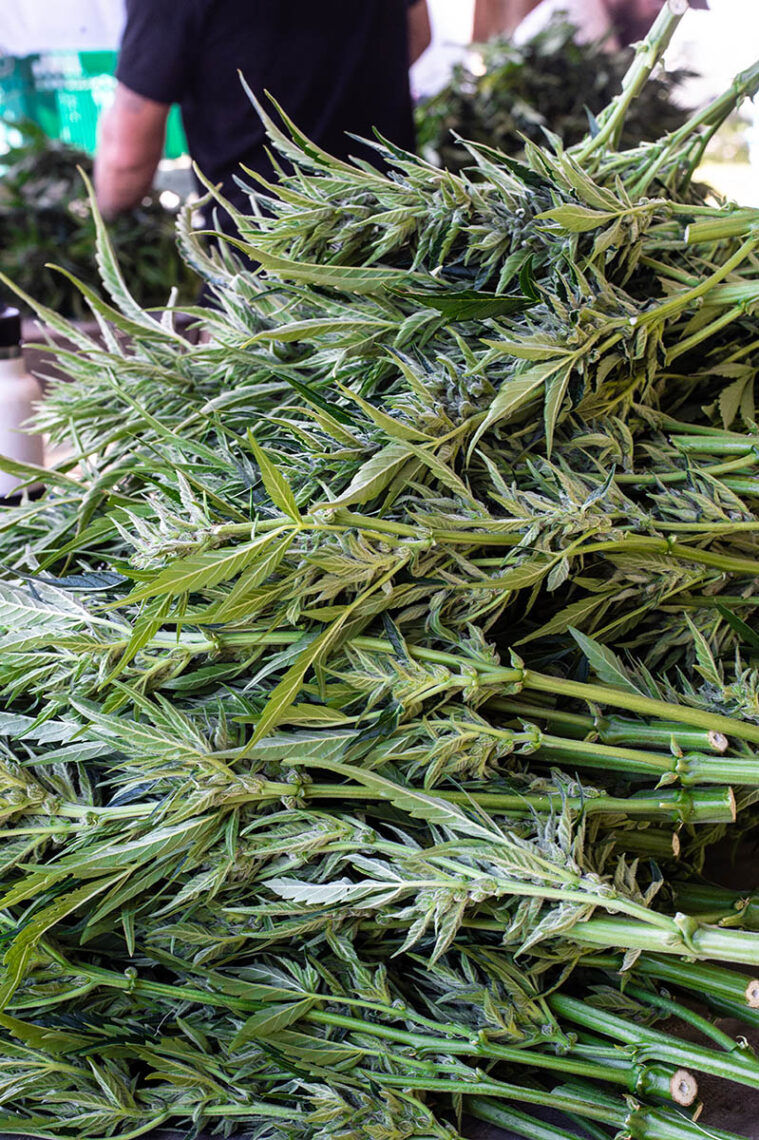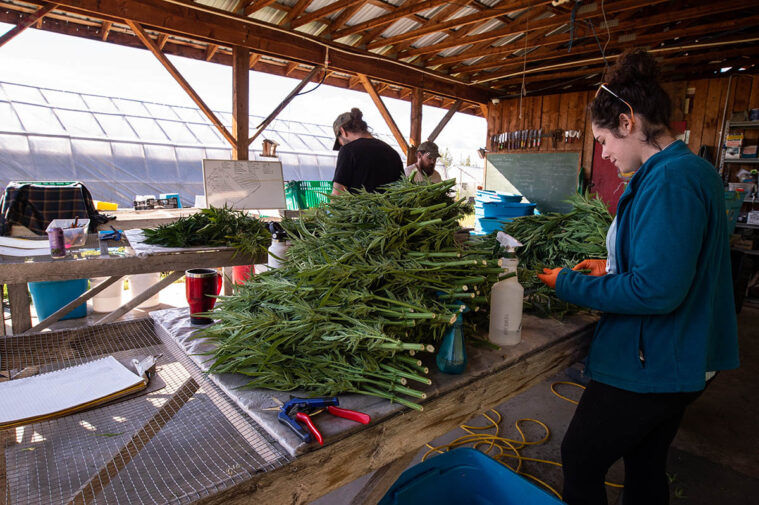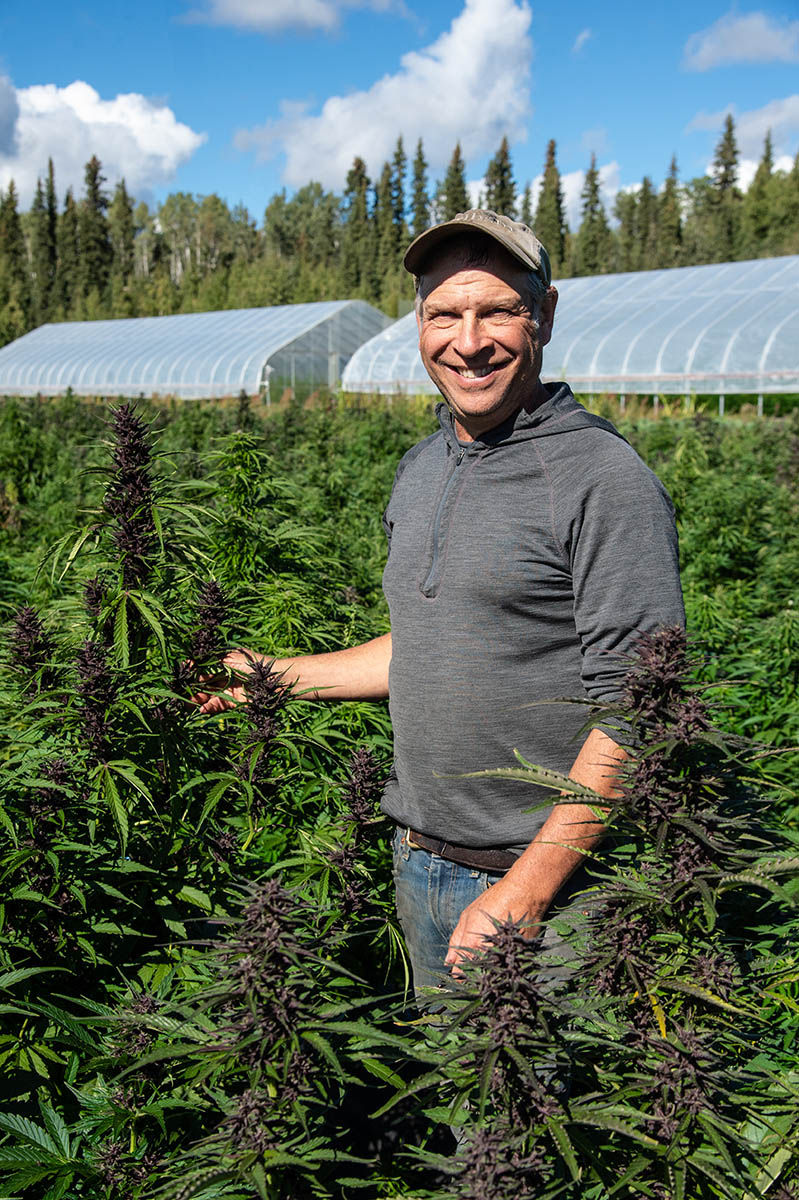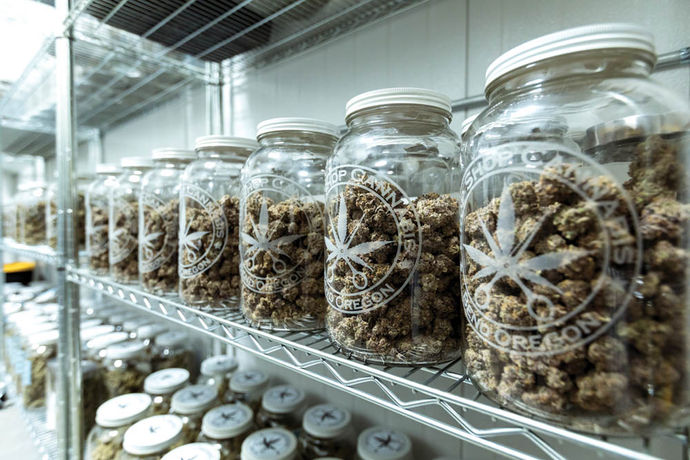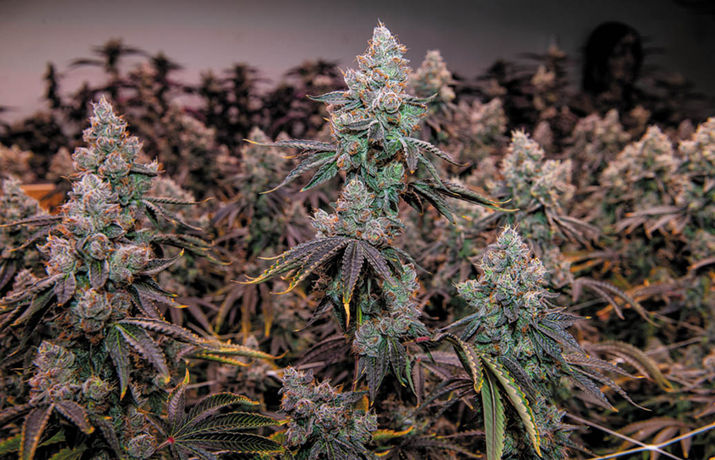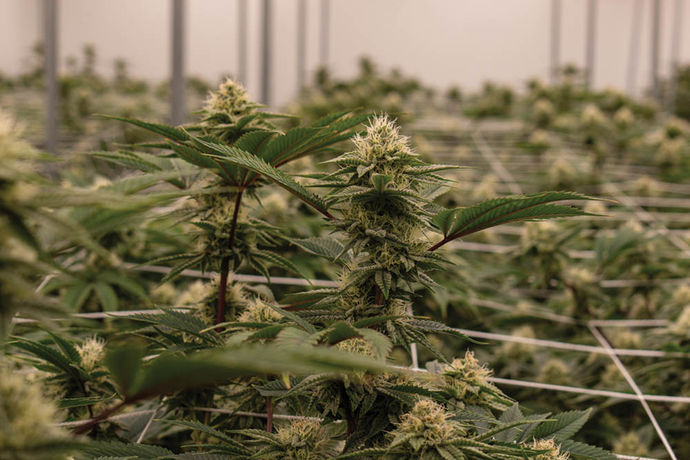On August 19, the rain pounded against the windows of a small regional jet as it readied for takeoff. Under cloud cover, the plane shook relentlessly during the 45-minute flight from Anchorage to Fairbanks. Then, just as Mike Emers had said it would, the clouds rolled away on the airplane’s sharp descent and a lush, green landscape appeared. As the plane followed the elegant curvature of the Tanana River, a small break in the trees revealed an unobstructed aerial view of Emers’ legacy – Rosie Creek Farm.
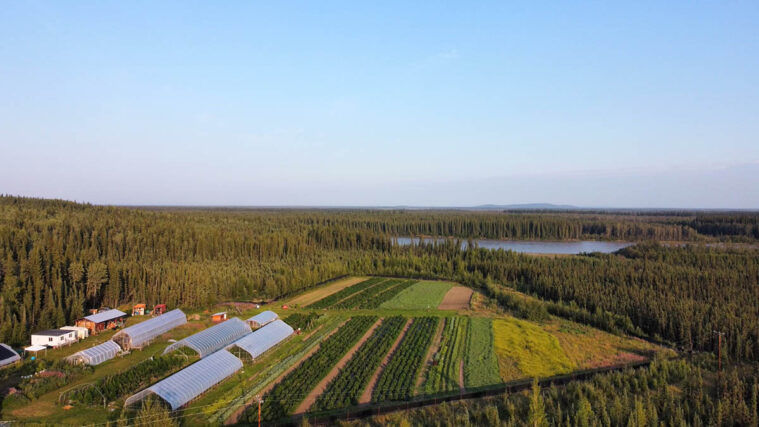
From New England to the Last Frontier
“Did you remember to look out the window during the descent?” Emers excitedly asked as I swung open the door to his well-worn car. Before a single syllable could be uttered in response, Emers was already on to the next subject. “With only a few hours things are going to be tight, but let’s see what we can cover in the car before we get to the farm,” he added before launching into a story about his favorite teenage pastime – getting stoned in his hometown of Providence, Rhode Island and giving Brown University students wrong directions.
“I can say that I smoked so much weed in high school that I didn’t want to have anything to do with it until I was farming up here, but that’s a long story in and of itself,” explained Emers over the nearly deafening sound of wind rushing past his rolled-down window.
After decades of living in Alaska, Emers’ New England accent has all but left him. However, his innate predilection for efficiency and pragmatism has not. In fairness, it is those qualities that have helped sustain Emers’ family since the 1980s.
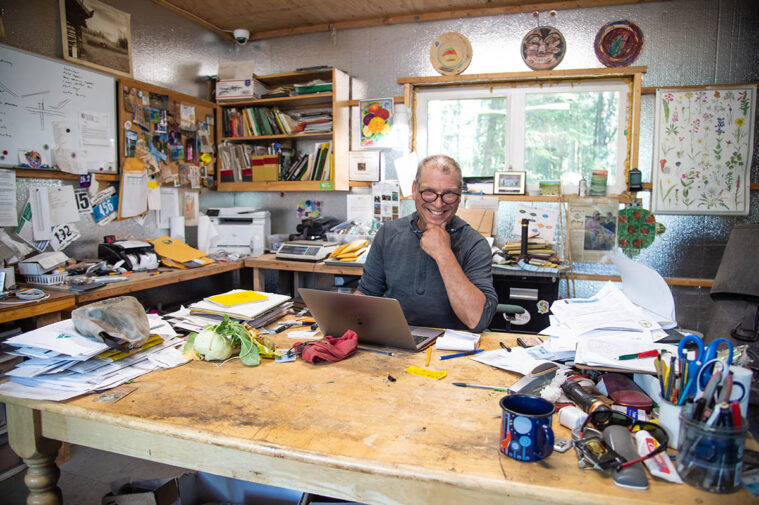
“I was looking for adventure and became a park ranger in the Brooks Range right out of college,” explained Emers. “Then, I got interested in resource management and decided to get a master’s degree in botany and plant ecology from the University of Washington.”
His passion for botany led to a job studying rare Alaskan plants and caribou habitats for the Arctic National Wildlife Refuge. While Emers enjoyed being surrounded by breathtaking, remote Alaskan landscapes in the summer, each fall a return to his Fairbanks home left him dismayed.
“I’d start a garden every year and instruct people how to water and care for the plants. But they wouldn’t do it, so I’d be out in the field all summer and come back in August or September to find nothing alive in the garden. I really longed to be gardening, so after being in the field for over 20 years, I finally quit and started a farm – which probably wasn’t the smartest thing to do,” said Emers.

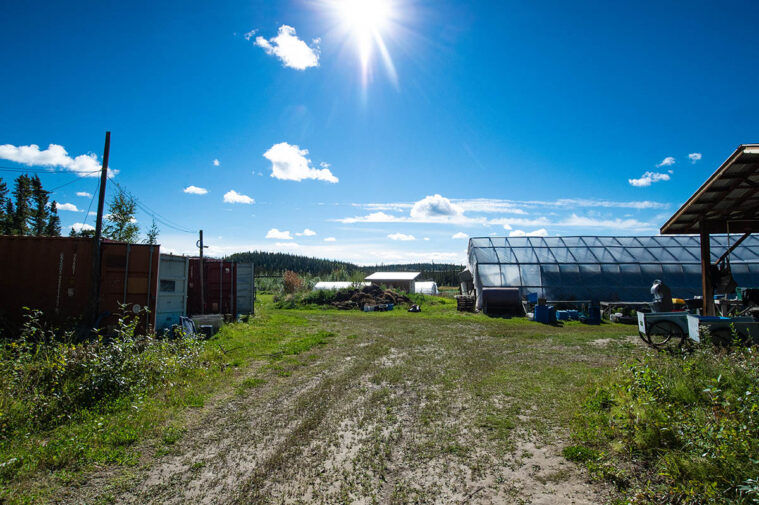
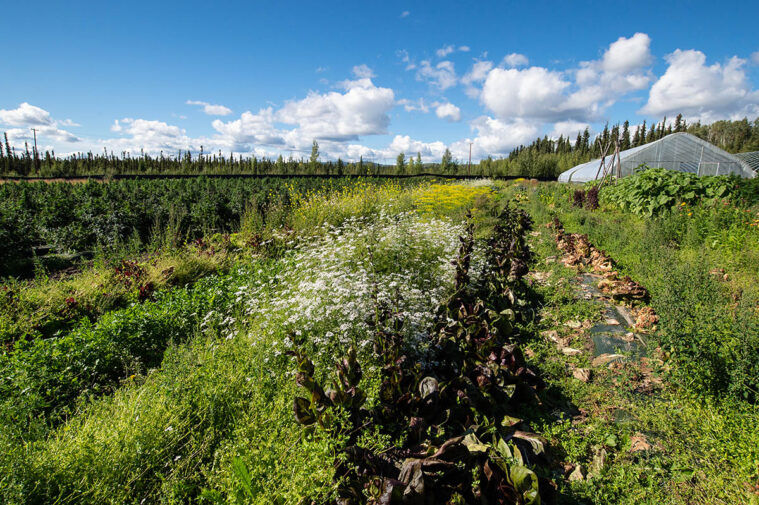
Rosie Creek Farm was erected on the fertile soil near the banks of the Tanana River. The farm’s proximity to the river and the long, hot summer days made it the ideal place to grow cut flowers and a variety of vegetables.
“I was actually the first person to grow peonies, you know, before the whole peony craze took off,” explained Emers.
With Alaska’s growing season several months behind the Lower-48, Alaskan peony farmers had a unique stranglehold on the market for the most sought-after ornamental flowers in the world. Still, Emers discovered that growing premium cut flowers and vegetables wasn’t paying the dividends that he had anticipated.
“I ran the numbers with my wife and found out that in my most successful year, I grossed a little over $22,000. To put it another way, when we factored in the amount of time I spent tending the garden, I was averaging just over $1.73 an hour. So, I was killing myself, but for what?” explained Emers.
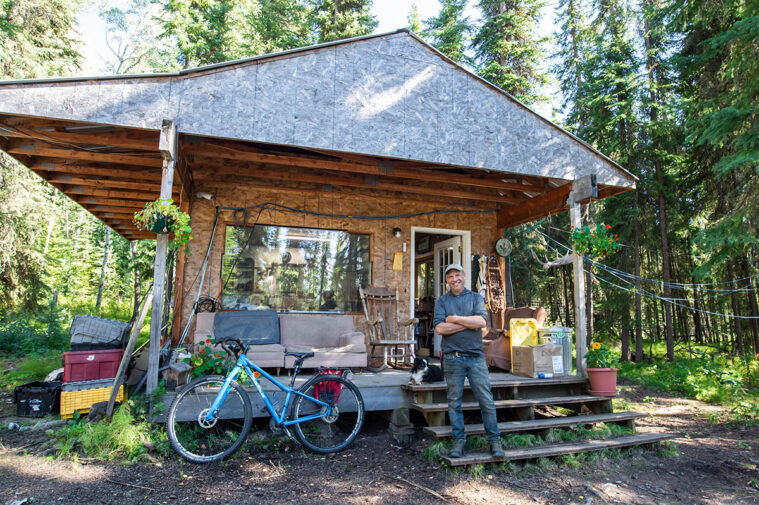
A New Kind of Flower
Not wanting to abandon the soil he had spent years tilling, Emers began to look for another way forward. He just didn’t anticipate that the way forward was to actually return to his roots in Providence.
“I look at things in terms of how much money I can make per a row and per foot. Hands down, the biggest crop in the U.S. has been Cannabis and so I thought to myself, ‘I’ll do that,’” said Emers.
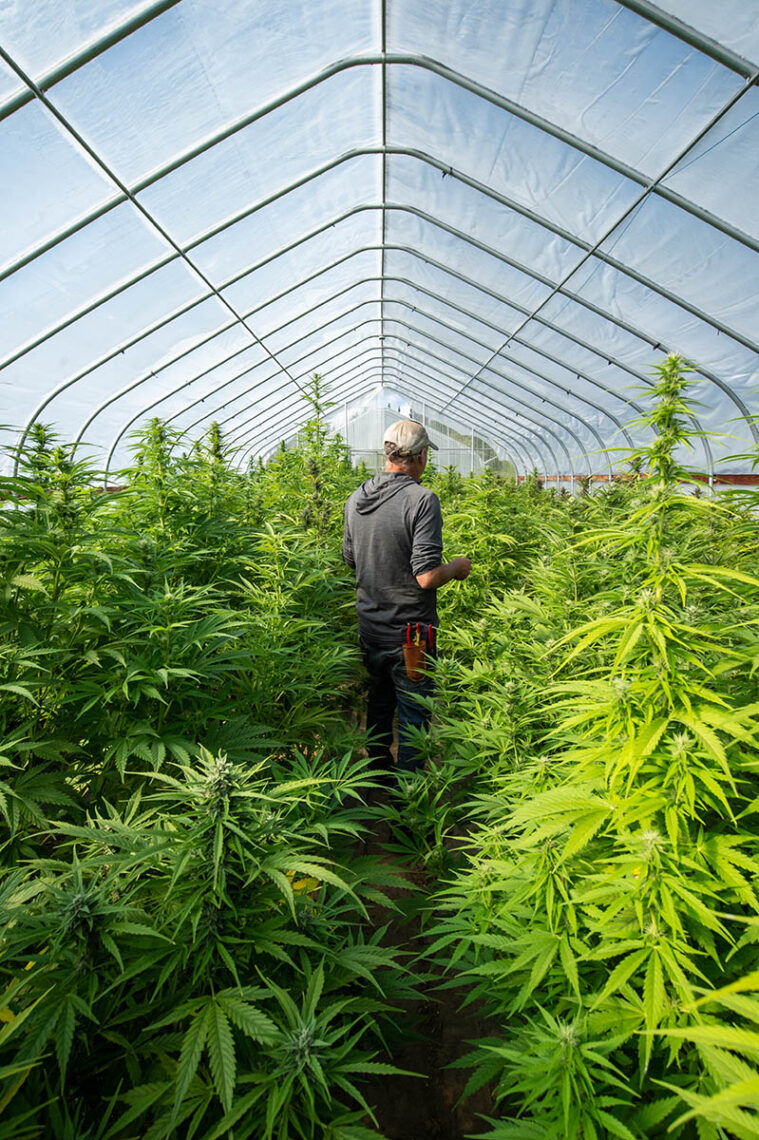
When he shared his intentions with his farming friends around the state, he was met with skepticism. Even his attorney advised him against the proposition.
“I didn’t know that most Cannabis was grown under lights in warehouses. Nobody told me that when I was working on my license,” said Emers. “Obviously, I had smoked in high school and had grown plants in my room. I knew how to grow other plants outside, so I figured, ‘How hard could it be?’ I was optimistic about my plan, but my first attorney had told me, ‘OK, you can try that, but just know that it’s never been done,’” said Emers.
Despite the warnings, Emers pressed on with his plans – but he soon found that when it comes to pioneering a new way of growing Cannabis in the Arctic, it helps to have support.
Breaking the Mold
“When I got started, I refused to be a part of ‘pot culture.’ I just didn’t like it and so I didn’t wear my hat the right way or have the right handshake,” recalled Emers. “I didn’t party with other growers. I didn’t surround myself with the people who knew the business. Looking back, I see now how arrogant that was, and frankly, it was the wrong thing to do. I had no idea what I was doing, and it showed.”
Having read that autoflowering Cannabis didn’t require light manipulation, he decided to purchase several seed packs. What he soon discovered was that while autoflowering plants were somewhat developed for outdoor growers, they were more geared to the home grower who wanted to grow in their closet without much hassle.
“Let’s just say this: Autoflowering Cannabis wasn’t developed for agriculture in the far north. It just wasn’t,” said Emers.

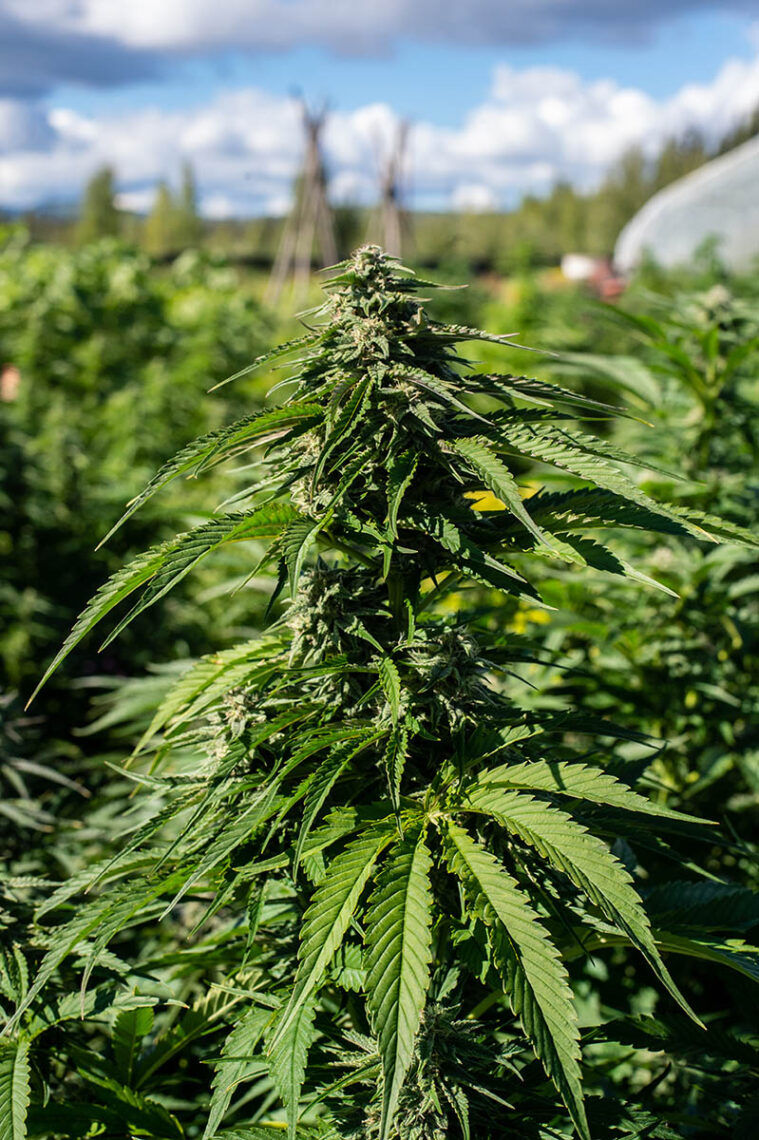
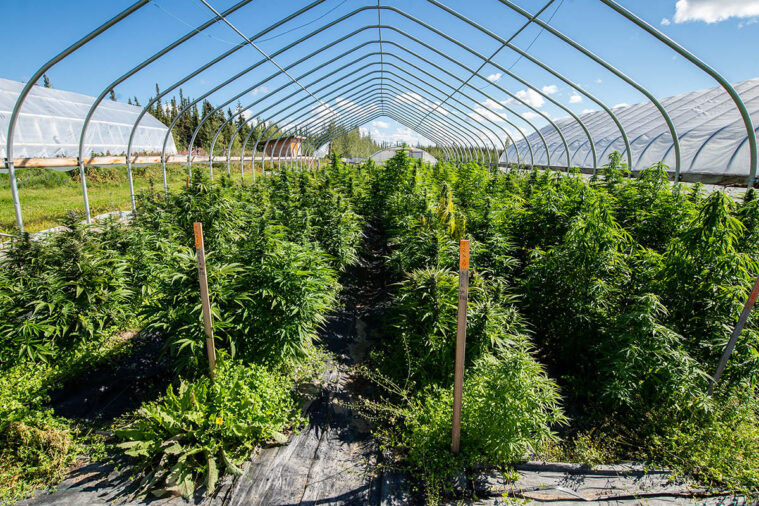
As Emers struggled to find consistency in his early crops, he began to suspect that the inconsistent genetics of his seeds were to blame.
“If I planted a hybrid Cannabis seed developed by an autoflowering Cannabis operation that sells their products from a broker on a website, I would get genetic profiles that were all over the map. They weren’t stabilized. So, I learned that just like anything else you grow, you have to find something that looks good from the seed stock we originally ordered and then continue to cull the plants until you get the absolute best version of it,” said Emers.
No longer relying on third-party genetics, Emers spent the last seven growing seasons breeding his own plants.
“When you’re growing 400 plants of the same variety, you have a lot of opportunities to pick and choose the best females to breed. When you keep doing that year after year, you can create premium flower,” said Emers.
Now, Rosie Creek is home to seven strains that were genetically developed on the farm.
“I am not planning on selling my genetics because they are what makes our farm unique. But also, I don’t know if the strains would grow as well if planted somewhere else. They have worked for me, but that comes with 30 years of working this land and really understanding the soil. Truthfully, farming is 90% knowing the land,” said Emers.

The Rosie Creek Difference
Although Emers often emphasizes the financial aspects of farming, when he parks his car in front of his makeshift office building and begins walking towards the entrance of Rosie Creek, his demeanor noticeably changes. Suddenly, in his element, Emers is relaxed and it becomes clear that his connection to the land is spiritual.
“I hear all of these people talking about their living soil or putting this or that acid into the soil to increase its yield and that’s great. But what people are trying to do in a warehouse with hydroponics, is just them trying to recreate what we have naturally,” said Emers as he overlooked his 50-acre property.
For Emers, proper stewardship of the land is what separates Rosie Creek from its competition. Not only is the farm USDA-certified organic, but it is also certified by the Real Organic Project. Stricter than the USDA, the Real Organic Project was started by farmers to protect the meaning of organic.

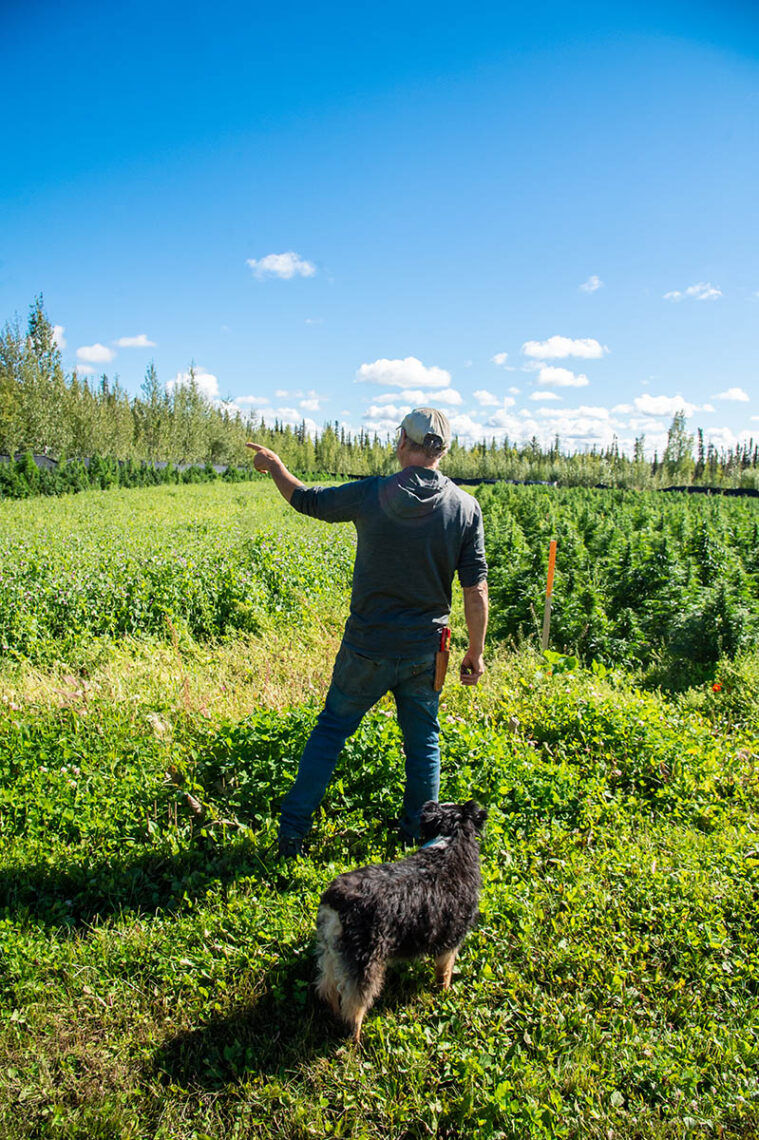
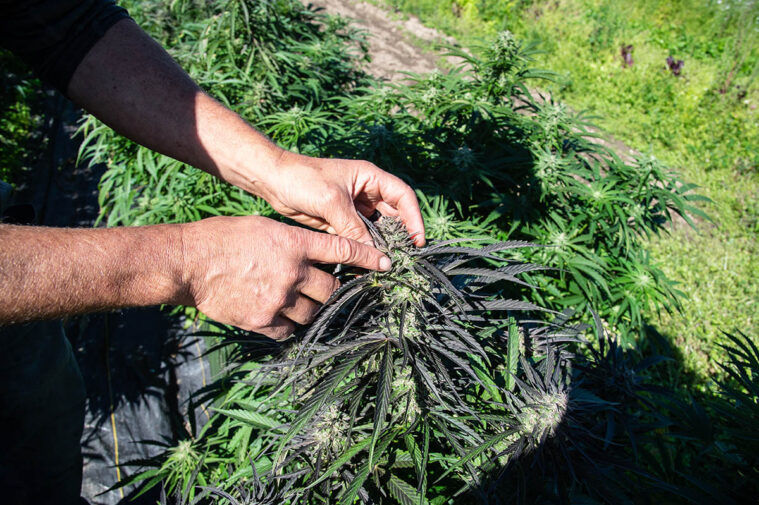
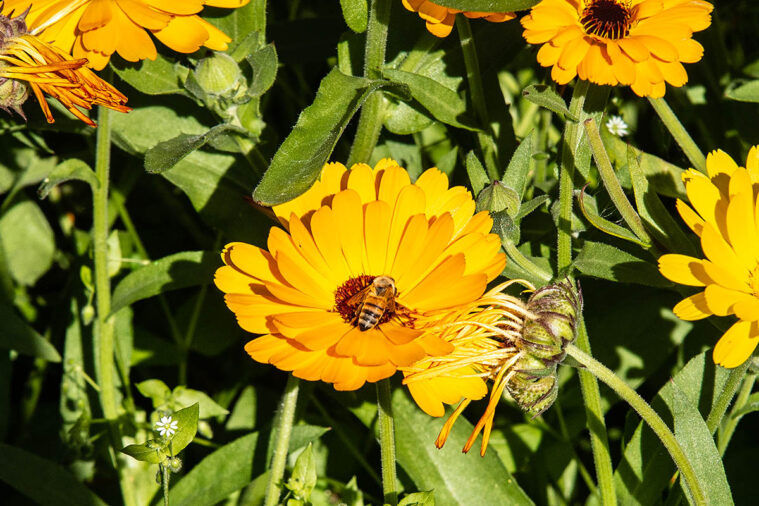
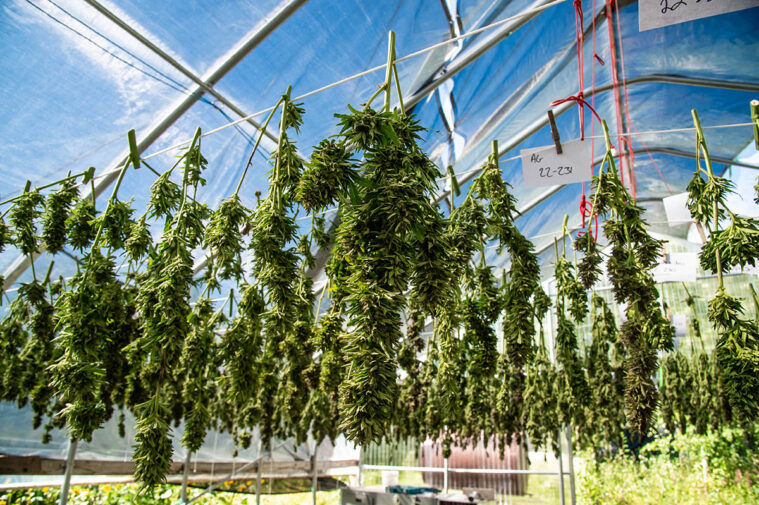
“The whole point of the program is that you feed the soil and the soil will feed the plants. If you treat the soil with respect, it will feed and sustain the plants,” explained Emers.
As part of his certification, Emers takes half an acre out of production each year and plants cover crops to add nitrogen and organic matter back into the soil. The cover crops also provide vital honey bee habitats.
“We’re not required to do many of the things we do to protect and nourish the land but for me, it is one of the most important aspects of farming. Marijuana is a very easy plant to grow – there’s a reason it’s called weed. But it’s very hard to responsibly grow good weed. There are a lot of subtleties, and I am continually learning how to do it better. I think continuing to learn and improve is the mark of success,” explained Emers with a satisfied smile.
